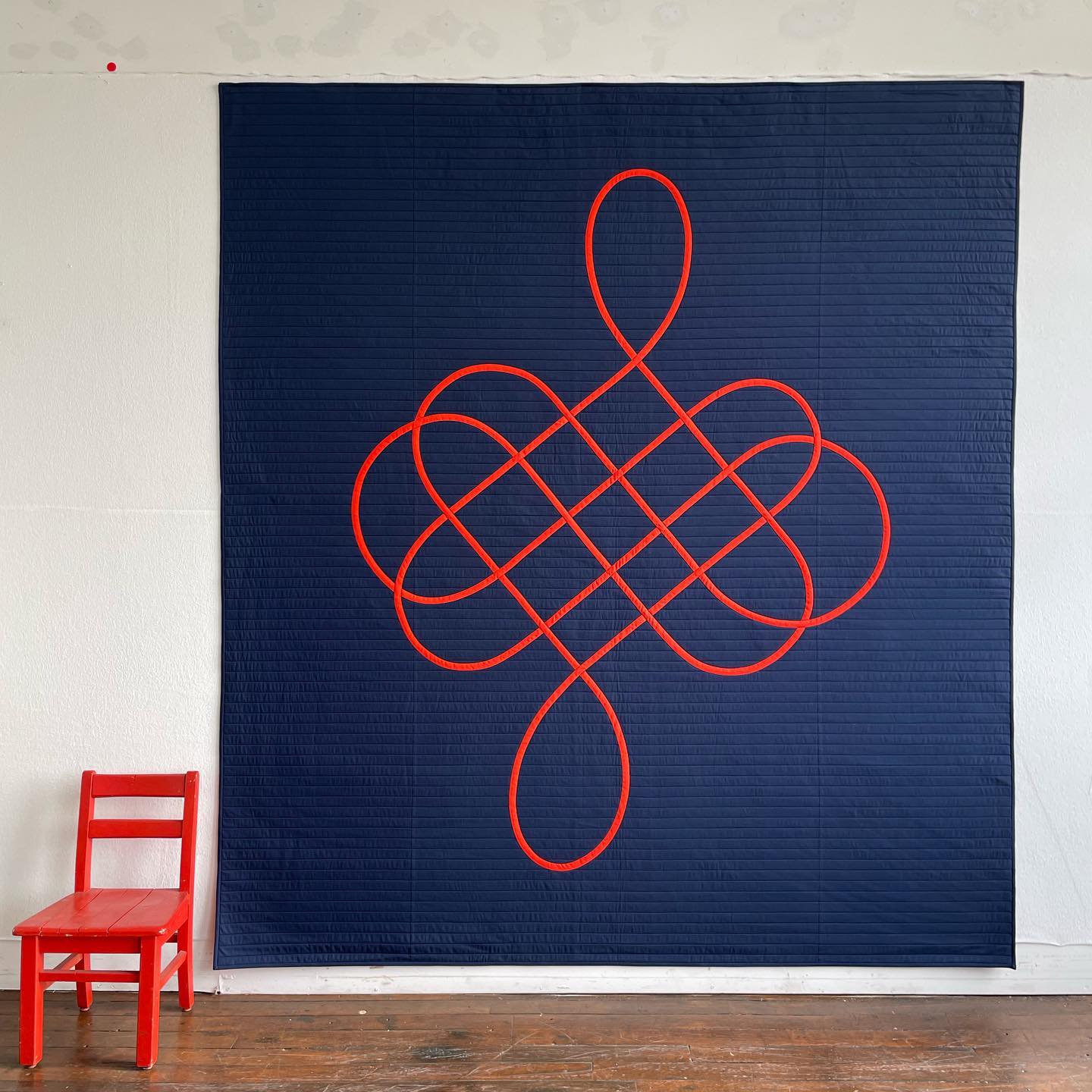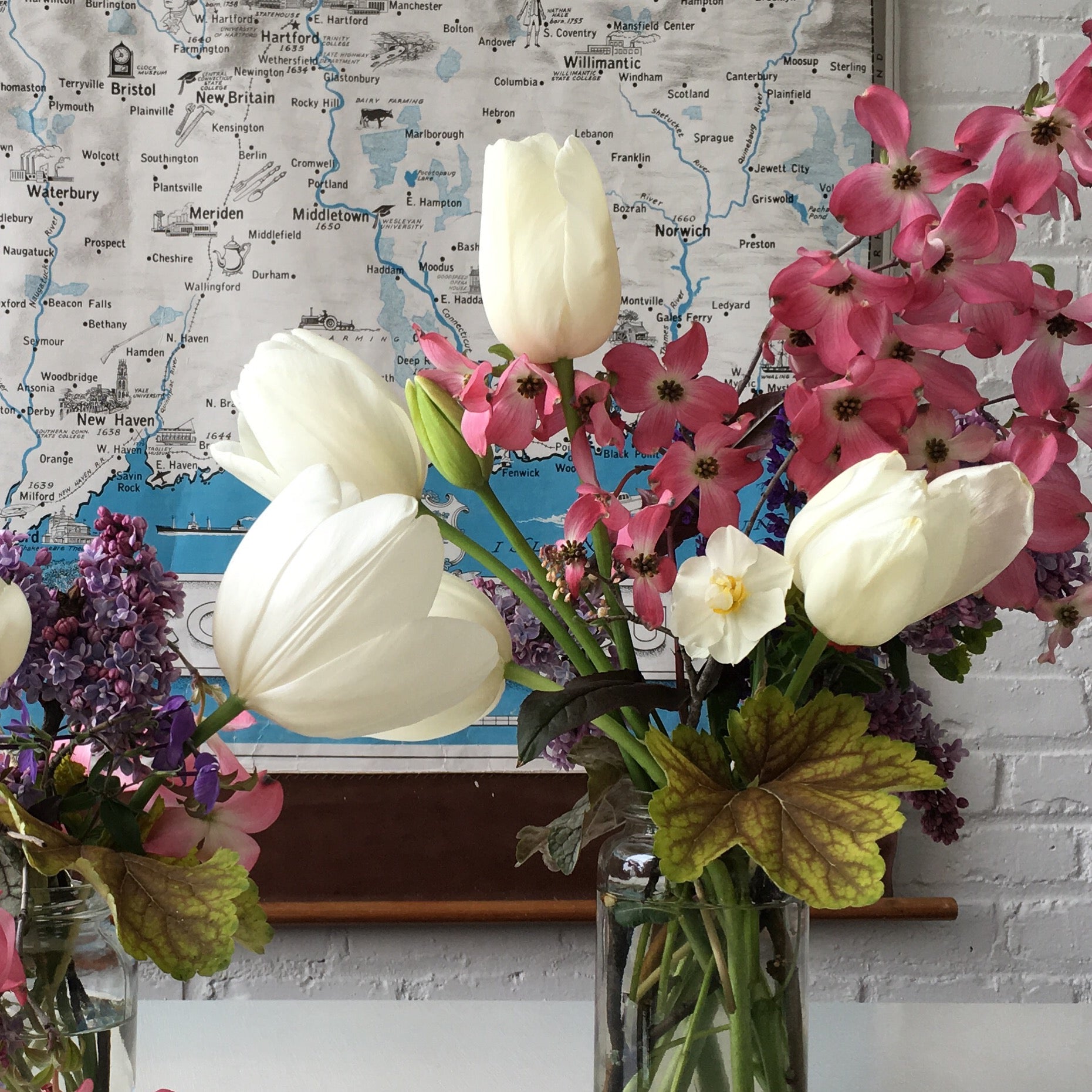In many ways, I was almost at the end of my rope. Years of neglecting to care for my creative self in favor of plowing through endless to-do lists—a bad habit common to most small business owners—had left me so burned out and depleted, that I couldn’t see my way back to the joy of creating. But somehow—out of desperation?—I found the gumption to apply for a residency at Haystack Mountain School of Crafts in Deer Isle Maine. Amazingly—and just in the nick of time—I got it.
Haystack was, in a sense, where my business first began. In 1995 I took a two-week workshop there with quilter Nancy Crow. For some time, I had had a crazy idea of making quilts for a living, and used this break from my full-time job as a way of building momentum to accomplish that goal. Returning there after over 25 years of DSQ, of incredible opportunities and successes as well as struggles and failures, would be a nice logical loop.
No matter the outcome.
I’m grateful not only to have been accepted, but also that there were no requirements of our time there. We could read, sleep, do nothing. That lack of pressure and expectation – while disorienting at first, was exactly what I needed to reset.

Inspiration for my Knot Quilt came about during that fortuitous summer of 2021 at Haystack.
My first day there, our tour of the campus concluded at the library and I lingered to browse the fiber and textile section. I came across The Ashley Book of Knots, and was immediately captivated by the almost 4,000 knot drawings and diagrams, with descriptions, historic reference, and uses. I've always been fascinated by the art of knot tying and the infinite uses and forms they take, and have a particular fondness for diagrammatic drawings. The encyclopedic book is the result of eleven years work (and a lifetime of research) by Clifford W. Ashley, born in the whaling town of New Bedford MA in 1881.

Knot #1993, the Midshipman's Hitch, caught my attention with its comical depiction of a scruffy sailor sitting in a loop of rope with a hungry shark lurking below. The description begins:
"When you have fallen overboard, which happens to us all, sooner or later..." and ends after a careful step-by-step with "...you are now quite ready to be rescued."
Indeed.
I revisited this book several times during my stay, sketching my own versions of the diagrams, my head filled with the ideas of function, purpose, knots, tangling and untangling, and rescue.

Eventually I began work on my first Knot Quilt, and also experimented with screen-printing organic shapes as a faster alternative to appliqué.

My residency at Haystack gave me the opportunity to reconnect with the creative process – my creative process – without thought of deadlines, clients, or commerce. I’m still excited about the work I began there. I’m still surprised at how little time it took to reawaken something I actually thought may have been gone for good. It’s a bit frustrating that I still have not had much time in my “real life” to continue exploring and experimenting, but I have made real, tangible progress in laying the groundwork to so, and in understanding the necessity of putting my creative self on the top of my to-do list.

One for the road: Try not to put so much pressure on yourself; sometimes you simply need to stop forcing it—allow yourself some time and space.


